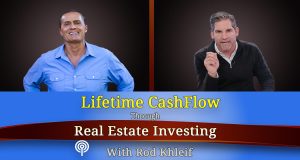Ep #163 – John Assaraf – Unlock your mind to achieve anything you want.
In today’s episode you will learn:
- Mindset isn’t just a way of looking at the world; there are a lot of proponents to mindset.
- Attitude, beliefs, habits, perception, emotion, and behaviors all deal with mindset.
- Highly successful people have more empowering rituals and routines than people that are not as successful.
- Just having happy and positive thoughts won’t attract those things that you desire.
- If you have a vision for your life and goals, and you have the ability to stay mentally and emotionally focused on that vision and those goals are, and you upgrade your knowledge and skills so that you know what it takes to match that vision or goal, and you get your body to move into action to do the right things, in the right order, at the right time, then and only then will you be in resonance.
- Law of attraction = resonance
- Resonance at the spiritual, emotional, mental and physical body, have to be perfectly aligned.
- Law of attraction goes well with the G.O.Y.A law.
- Let go of the illusion that the “How to” is your problem.
- For any goal that anyone has, someone has already done it. So the “how to” exists.
- The question to ask yourself about your goals and vision is “What is preventing me from doing that”
- Learn how to “flip the switch” meaning what would have to happen for a problem to flip.
- “Flip the switch” meaning visualizing being successful if what you fear.
- Think of your brain as a neuro-muscle. So your beliefs, habits, perceptions, emotional attachment to things are all individual neuro-muscles.
- Daily rituals help build your neuro-muscles.
- When you think about fear, you de-activate the genius part of your brain; you deactivate the motivational circuit in your brain.
- When you visualize yourself actually conquering that fear, you are activating the occipital lobe in your brain which is the motivational center in your brain and you open up the genius part of your brain, which will all activate the “how I can do this” muscle vs the “Why I can’t” muscle.













